Address
304 North Cardinal
St. Dorchester Center, MA 02124
Work Hours
Monday to Friday: 7AM - 7PM
Weekend: 10AM - 5PM
Address
304 North Cardinal
St. Dorchester Center, MA 02124
Work Hours
Monday to Friday: 7AM - 7PM
Weekend: 10AM - 5PM
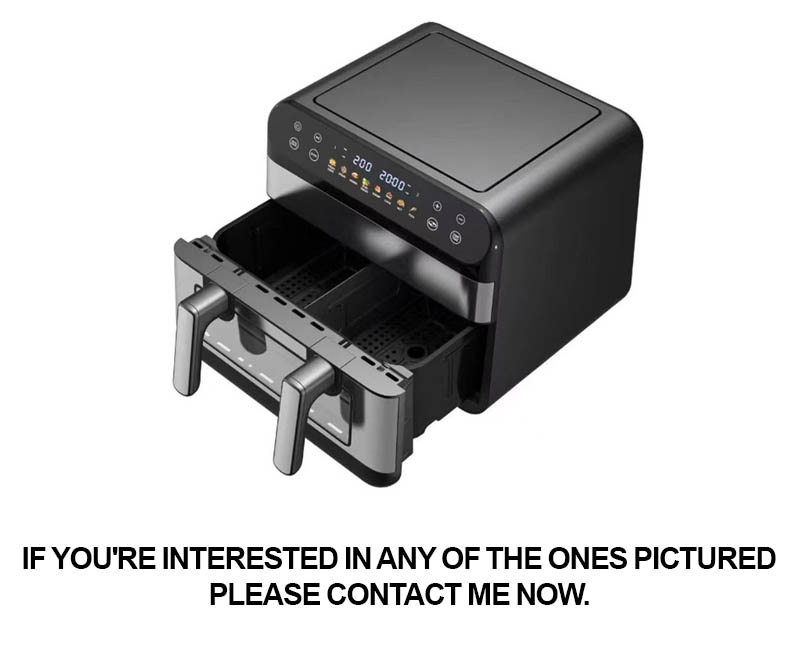
As the world becomes more digitized, the kitchen appliances industry is undergoing a transformative shift. With e-commerce platforms like Lazada and Shopee leading the charge, the future of kitchen appliances is brimming with innovation and convenience. Let’s delve into the evolving landscape of kitchen appliances e-commerce and explore what lies ahead.
The online kitchen appliances market has seen a remarkable surge in Europe and America, transforming the way consumers shop for their home essentials. With the advent of e-commerce platforms like Amazon, eBay, and the rise of regional giants such as Lazada and Shopee, the convenience of shopping from the comfort of one’s home has become a norm. This shift has not only made purchasing kitchen appliances more accessible but has also led to a demand for a wider variety and higher quality of products.
The convenience factor is a significant driver behind the rise of online kitchen appliances. Consumers no longer need to travel long distances to brick-and-mortar stores, saving them time and effort. Additionally, online platforms offer a vast array of options, allowing customers to compare prices, read reviews, and even visualize how the appliance will fit into their kitchen space. The ability to shop at any time of the day has also become a major draw for busy professionals and families.
The rise in popularity of smart kitchen appliances has been another key factor. These devices, equipped with advanced technology such as Wi-Fi connectivity and voice command, have become a staple in many European and American households. Smart ovens, refrigerators, and dishwashers not only enhance the cooking experience but also offer features like energy efficiency tracking and remote control capabilities. This has created a niche market that is rapidly growing in both demand and sales.
Moreover, the health and wellness trend has played a crucial role in the online kitchen appliances market. As consumers become more health-conscious, they are seeking out appliances that can help them prepare nutritious meals more easily. This includes high-quality blenders, juicers, and air fryers, which are popular for their ability to create healthy and delicious dishes with minimal oil and fat. Online retailers have capitalized on this trend by offering a wide selection of health-focused kitchen gadgets.
The COVID-19 pandemic also accelerated the shift to online shopping, with many consumers turning to e-commerce for all their needs, including kitchen appliances. Lockdowns and social distancing measures led to an increased reliance on delivery services, and kitchen appliances were no exception. Sales of small kitchen appliances, such as toasters, kettles, and slow cookers, soared as people sought to enhance their home cooking capabilities.
The competitive pricing offered by online retailers has been another draw for consumers. Online platforms often offer discounts, deals, and bulk purchase options that are not always available in physical stores. This has allowed consumers to find the best deals on top-of-the-line kitchen appliances without having to pay premium prices.
Furthermore, the rise of social media has influenced the kitchen appliances market. Influencers and lifestyle bloggers are increasingly promoting kitchen appliances, creating buzz and driving sales. Their endorsement of certain brands and products has helped to establish trust and credibility among consumers, who often look to these influencers for product recommendations.
In Europe and America, the logistics and delivery infrastructure have also played a role in the success of online kitchen appliances. Efficient shipping and return policies have made purchasing online a seamless experience, further boosting consumer confidence. Additionally, the availability of financing options and easy payment methods has made high-end appliances more accessible to a broader audience.
Overall, the rise of online kitchen appliances in Europe and America is a testament to the evolving consumer landscape and the changing face of retail. As technology continues to advance and consumer preferences shift, it’s clear that the online kitchen appliances market will only continue to grow, offering new and exciting products to meet the demands of modern cooking enthusiasts.

The kitchen appliances market has been witnessing a dynamic evolution, with trends shaping the way consumers approach their culinary needs. From smart technology integration to eco-friendly designs, here’s a closer look at the key trends currently defining the kitchen appliances landscape in Europe and America.
Smart Kitchen Appliances: The integration of smart technology in kitchen appliances is becoming increasingly popular. Smart fridges, ovens, and dishwashers are not just convenient but also offer features like remote monitoring, voice control, and energy efficiency. Users can now manage their kitchen appliances through their smartphones, making cooking and cleaning more manageable and efficient.
Energy Efficiency: With rising environmental concerns, energy-efficient appliances have become a top priority for consumers. European and American markets are seeing a surge in energy-saving models that reduce utility bills while minimizing the carbon footprint. Look for appliances with the Energy Star label, which guarantees compliance with strict energy efficiency standards.
Compact and Multipurpose Appliances: As urban living spaces become more compact, there’s a growing demand for kitchen appliances that serve multiple functions. Mini-fridges, countertop ovens, and compact dishwashers are becoming popular choices for those with limited space. These appliances offer the convenience of larger counterparts without the need for extensive counter or storage space.
Health and Wellness: There’s a significant shift towards appliances that promote health and wellness. Induction cooktops, for example, are gaining popularity due to their ability to heat food quickly and evenly, reducing the risk of harmful chemical leachates from non-stick coatings. Additionally, air fryers and sous-vide machines are becoming staples for those interested in healthier cooking methods.
Customization and Personalization: Consumers are looking for appliances that can be tailored to their specific needs. Customizable kitchen appliances, such as ovens with adjustable temperature zones or refrigerators with customizable shelves, are becoming more common. This trend reflects a desire for a kitchen that not only looks good but also functions perfectly for each user.
Eco-Friendly Materials: Sustainability is a major factor in the kitchen appliances market. Manufacturers are increasingly using eco-friendly materials, such as recycled steel, bamboo, and biodegradable plastics, to reduce the environmental impact of their products. This trend is likely to grow as consumers become more conscious of the lifecycle of their appliances.
Internet of Things (IoT) Integration: The IoT is making its way into the kitchen, with appliances that can communicate with each other to create a more seamless cooking experience. Smart kitchen systems can automatically adjust settings based on user preferences and even order groceries when supplies are low. This level of connectivity is expected to become standard in the coming years.
Smart Cooking Assistants: Appliances that offer cooking assistance through AI and machine learning are starting to emerge. These devices can analyze recipes, suggest ingredient substitutions, and even guide users through the cooking process. This trend is particularly appealing to tech-savvy consumers and those looking to simplify their cooking routines.
Modular Kitchen Systems: Modular kitchen appliances are becoming a popular choice for those who want to customize their kitchen layout. These appliances can be easily swapped out or added to as needed, allowing for a flexible and scalable kitchen setup. This trend is particularly attractive to those who may move frequently or want to change their kitchen design over time.
Durability and Longevity: With the increasing cost of appliances, consumers are seeking products that offer long-term value. Appliances with durable construction, extended warranties, and reliable performance are becoming more appealing. This trend reflects a shift towards investing in quality over quantity.
The kitchen appliances market is continuously evolving, driven by consumer demands for convenience, efficiency, and sustainability. As these trends continue to shape the industry, manufacturers and retailers will need to stay ahead of the curve to meet the ever-changing needs of their customers.
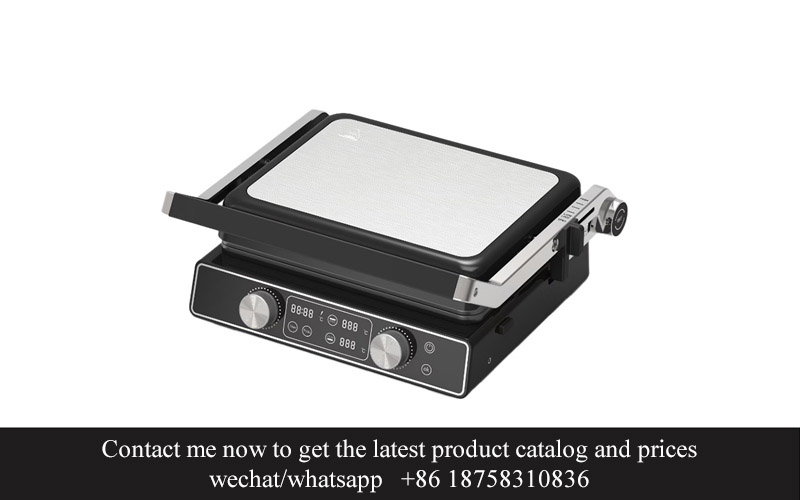
In the ever-evolving landscape of the kitchen appliances market, two e-commerce giants, Lazada and Shopee, have emerged as pivotal players, reshaping the way consumers discover and purchase these essential household items. Their impact is multifaceted, from simplifying the shopping experience to driving innovation within the industry.
Lazada, known for its expansive reach across Southeast Asia, has become a go-to platform for kitchen appliance brands looking to expand their market presence. The platform offers a vast array of options, from high-end brands to budget-friendly models, catering to diverse consumer needs. By leveraging its user-friendly interface and robust search functionality, Lazada enables customers to easily navigate through thousands of products, making informed decisions based on reviews, prices, and features.
Shopee, on the other hand, has carved out a niche in the online shopping space with its strong presence in Southeast Asia and Taiwan. The platform’s focus on mobile commerce has been particularly effective in the kitchen appliances sector, as many consumers prefer the convenience of shopping on their smartphones. Shopee’s live streaming events, where products are showcased in real-time, have become a popular way for brands to connect with customers and showcase the benefits of their appliances.
Both Lazada and Shopee have played a crucial role in democratizing access to kitchen appliances. By offering a variety of payment options, including cash on delivery and digital wallets, they have made purchasing these items more accessible to a broader audience, including those who may not have credit cards or prefer not to use them online.
The platforms have also been instrumental in driving competition and innovation. With numerous brands vying for attention, manufacturers are pushed to develop new and improved products to stand out. This competition has led to a surge in smart kitchen appliances that offer connectivity, energy efficiency, and user-friendly interfaces, all of which are highly sought after by today’s tech-savvy consumers.
In terms of marketing and brand visibility, Lazada and Shopee have provided kitchen appliance brands with powerful tools. Through targeted advertising, brands can reach specific demographics with tailored messaging. The platforms also offer data analytics that provide valuable insights into consumer behavior, allowing brands to refine their strategies and product offerings accordingly.
Moreover, both Lazada and Shopee have been proactive in addressing the challenges of the kitchen appliances market. They have implemented rigorous quality control measures to ensure that only reliable and safe products are sold on their platforms. This has helped build trust with consumers, who are increasingly concerned about the safety and durability of the products they purchase online.
The integration of social media and community features within these platforms has also been a game-changer for kitchen appliance brands. Users can share their experiences, ask questions, and even vote for their favorite products, creating a sense of community and fostering brand loyalty. This engagement not only helps in driving sales but also in gathering valuable feedback that can be used to improve products and services.
In the realm of sustainability, Lazada and Shopee have taken steps to promote eco-friendly kitchen appliances. By highlighting products that are energy-efficient or made from recycled materials, they are encouraging consumers to make more environmentally conscious choices. This not only aligns with the growing trend of sustainability but also opens up new market opportunities for brands that prioritize eco-friendly designs.
Finally, the partnership between Lazada and Shopee with local and international logistics providers has streamlined the delivery process, ensuring that customers receive their kitchen appliances quickly and efficiently. This logistics network is crucial for maintaining customer satisfaction and repeat business.
In summary, Lazada and Shopee have become indispensable allies for the kitchen appliances industry, facilitating growth, innovation, and consumer trust. Their role in the market is not just about selling products; it’s about creating a dynamic ecosystem where brands can thrive and consumers can find the appliances that best suit their needs and lifestyles.
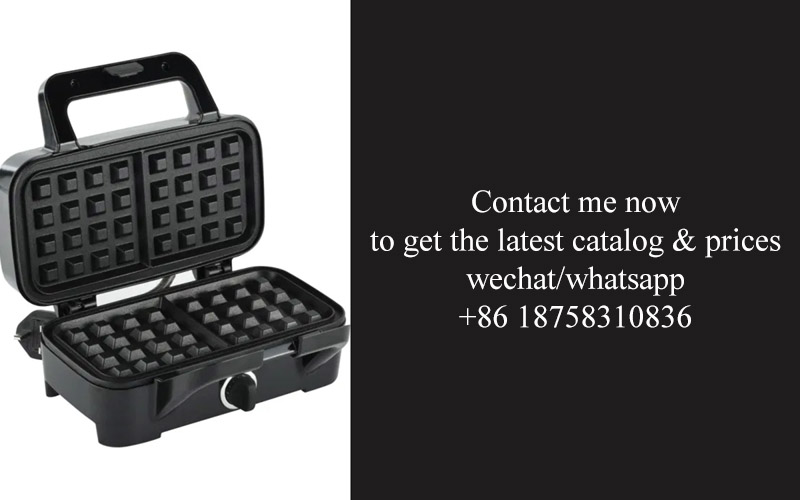
In the bustling world of online shopping, Lazada and Shopee have emerged as dominant platforms for a variety of products, including kitchen appliances. As these e-commerce giants continue to expand their reach, they’ve become go-to destinations for entrepreneurs looking to capitalize on the growing demand for home essentials. Here’s a look at some of the top dropshipping suppliers for kitchen appliances on both Lazada and Shopee.
1. Smart Appliances Supplier
One of the most sought-after suppliers on both Lazada and Shopee is known for its range of smart kitchen appliances. From voice-controlled ovens to smart fridges with built-in AI, this supplier offers cutting-edge technology that appeals to tech-savvy consumers. Their products are well-packaged and often come with detailed user manuals, making them a favorite among dropshippers.
2. Eco-Friendly Kitchenware
Eco-conscious consumers are on the rise, and so is the demand for eco-friendly kitchenware. A supplier that has made a name for itself on both platforms offers a wide array of sustainable and biodegradable kitchen gadgets. From bamboo cutting boards to silicone kitchen tools, this supplier caters to the environmentally conscious market segment, ensuring that dropshippers can tap into a niche that’s only getting bigger.
3. Budget-Friendly Brands
Not everyone is looking for the latest and greatest in kitchen appliances. Many consumers are on the hunt for affordable yet functional options. A top supplier on both Lazada and Shopee specializes in budget-friendly brands that offer great value for money. From basic toasters to multi-functional blenders, this supplier has a vast catalog that appeals to a broad customer base.
4. High-Quality Kitchenware
For those who prioritize quality over price, a supplier known for its high-end kitchenware has established a strong presence on both e-commerce platforms. Offering everything from high-grade stainless steel cookware to luxury kitchen gadgets, this supplier ensures that dropshippers can cater to customers seeking premium products.
5. Seasonal Specialties
Seasonal trends play a significant role in the kitchen appliances market. A supplier that excels in this area offers a range of appliances tailored to specific times of the year. Whether it’s summer grilling tools or winter heating appliances, this supplier keeps its inventory fresh and relevant, allowing dropshippers to stay ahead of the curve.
6. International Brands
For dropshippers looking to differentiate their offerings, a supplier that partners with international brands has become a popular choice. Offering a mix of well-known brands and unique, lesser-known products, this supplier gives customers a wide variety of options to choose from, ensuring a diverse and interesting inventory.
7. Customization and Personalization
Personalization is becoming increasingly important in the kitchen appliances market. A supplier that specializes in custom and personalized kitchen gadgets has found a niche on both Lazada and Shopee. From engraved cutting boards to monogrammed kitchenware, this supplier allows dropshippers to cater to customers seeking a touch of individuality in their kitchen.
8. Health and Wellness Appliances
With a growing focus on health and wellness, a supplier offering a selection of health-conscious kitchen appliances has gained popularity. From air-fryers to juicers, these products cater to consumers looking to adopt a healthier lifestyle, making them a hot commodity among dropshippers.
9. Multi-Channel Sellers
Some suppliers have managed to establish a strong presence on both Lazada and Shopee, as well as other e-commerce platforms. These multi-channel sellers offer a wider range of products and often provide additional support to dropshippers, such as marketing materials and customer service assistance.
10. Direct-to-Consumer Suppliers
Finally, there are suppliers that offer direct-to-consumer (D2C) options, allowing dropshippers to bypass middlemen and offer products at competitive prices. These suppliers often have a streamlined process for order fulfillment and can provide dropshippers with a more profitable margin.
By partnering with these top dropshipping suppliers for kitchen appliances on Lazada and Shopee, entrepreneurs can tap into a market that’s not only growing but also evolving with the times. Whether it’s through offering the latest technology, eco-friendly products, or budget-friendly options, the right supplier can make all the difference in the success of a dropshipping business.

Smart Cooking Technology IntegrationModern kitchen appliances are increasingly embracing smart technology, allowing users to control their devices remotely via smartphones or voice assistants. From smart ovens that can adjust cooking times based on weather conditions to refrigerators that can sync with your calendar to remind you to restock, the integration of smart technology is revolutionizing how we interact with our kitchen gadgets.
Sustainability and Energy EfficiencyThe kitchen appliances market is witnessing a significant shift towards sustainability and energy efficiency. Manufacturers are now focusing on creating appliances that consume less energy and are made from recycled materials. This includes everything from energy-saving dishwashers to LED lighting in microwaves, all aimed at reducing the carbon footprint and promoting eco-friendly living.
Personalized Cooking ExperiencesWith the rise of customization, kitchen appliances are now offering more personalized cooking experiences. From ovens with programmable settings that cater to different dietary preferences to coffee makers that can brew a cup of coffee based on your taste profile, these innovations are making cooking more tailored to individual needs and preferences.
Health and Wellness FeaturesAs health and wellness become more prevalent in consumer consciousness, kitchen appliances are incorporating features that promote a healthier lifestyle. This includes high-temperature steam ovens that can kill bacteria without the use of chemicals, air fryers that use less oil for healthier frying, and water filters built into refrigerators to ensure fresh, clean drinking water.
Interactive and Educational FeaturesModern kitchen appliances are not just about cooking; they’re also becoming interactive and educational tools. Smart cookers can guide you through recipes with step-by-step instructions, and some appliances even have built-in recipe databases. Additionally, some appliances are designed to teach users about nutrition and cooking techniques, turning the kitchen into a classroom.
Advanced Food Storage SolutionsPreserving the freshness of food is a top priority for many consumers, and kitchen appliances are responding with advanced food storage solutions. This includes vacuum-sealing systems built into refrigerators, sous-vide machines that extend the shelf life of food, and smart containers that monitor the quality of your produce.
Innovative Design and AestheticsThe aesthetic appeal of kitchen appliances has never been more important. Designers are pushing boundaries with sleek, minimalist designs that complement modern kitchen aesthetics. From stainless steel to glass, appliances are not just functional but also serve as a stylish addition to any kitchen space.
Customizable and Modular AppliancesThe kitchen of the future is flexible, and appliances are following suit. Modular designs allow users to customize their kitchen setups according to their needs, whether it’s adding a compact ice maker to a small apartment or extending a kitchen island with additional cooking modules.
Smart Connectivity and IoT IntegrationThe Internet of Things (IoT) is permeating every aspect of our lives, and kitchen appliances are no exception. From connected ovens that can be controlled via an app to refrigerators that can order groceries automatically, the smart kitchen is becoming a reality, with appliances that communicate and work together seamlessly.
Energy-Saving and Eco-Friendly MaterialsAppliances are now made with materials that not only perform well but also contribute to environmental sustainability. From biodegradable packaging to appliances that can be recycled at the end of their life cycle, the industry is moving towards a greener future.
Interactive User InterfacesThe way we interact with kitchen appliances is evolving. Touchscreens, voice commands, and even gesture controls are becoming more common, offering a more intuitive and hands-free cooking experience. These interfaces are designed to be easy to use and accessible to all users, regardless of their technological proficiency.
Hygiene and Safety EnhancementsWith a growing focus on hygiene and safety, kitchen appliances are incorporating features that protect users from cross-contamination and accidents. This includes self-cleaning ovens, child safety locks on appliances, and sensors that prevent overheating and fires.
In conclusion, the kitchen appliances market is undergoing a transformative phase, driven by innovation, sustainability, and personalization. These advancements are not just making cooking more efficient and enjoyable but also more tailored to the individual needs of consumers. As technology continues to evolve, the kitchen of the future promises to be a place of convenience, health, and style.
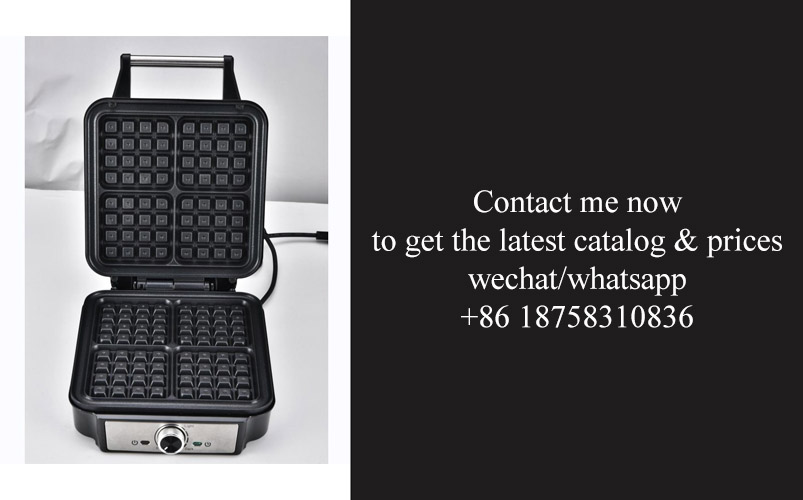
In the ever-evolving landscape of kitchen appliances, data-driven insights have become crucial for understanding market trends and consumer preferences. Here’s a delve into the key findings from a comprehensive market analysis:
Smart Integration: The integration of smart technology into kitchen appliances has seen a significant surge. From refrigerators that sync with smartphones to ovens that can be controlled remotely, the market is witnessing a blend of convenience and connectivity.
Energy Efficiency: With environmental concerns on the rise, there’s a clear shift towards energy-efficient appliances. Consumers are increasingly looking for appliances that not only save money on utility bills but also contribute to a greener planet. The market analysis shows a growing preference for appliances with high energy ratings.
Health and Wellness: The kitchen has become a hub for health-conscious cooking, and appliances are following suit. There’s a notable increase in demand for appliances that can help in preparing nutritious meals, such as air fryers, slow cookers, and sous-vide machines. Market data indicates a strong correlation between health trends and kitchen appliance sales.
Design and Aesthetics: No longer just functional, kitchen appliances are now a statement piece. The market analysis reveals a trend towards sleek designs and materials that complement modern kitchen aesthetics. Smart appliances with minimalist designs are becoming more popular, reflecting the consumer’s desire for a cohesive kitchen look.
Customization and Personalization: Consumers are seeking appliances that cater to their specific needs and preferences. Customizable settings, programmable features, and personalized recommendations are becoming standard in the market. The analysis shows that appliances that offer a high degree of personalization are gaining traction.
Sustainability: The market is not just focusing on energy efficiency but also on the sustainability of the appliances themselves. There’s a growing interest in appliances made from recycled materials and those that can be easily recycled at the end of their life. The data suggests that sustainability is becoming a key factor in purchasing decisions.
Smart Home Connectivity: As homes become smarter, kitchen appliances are increasingly part of the broader smart home ecosystem. The ability to connect kitchen appliances with other smart devices for seamless operation is a major trend. The market analysis highlights a surge in sales of appliances that integrate with voice assistants and home automation systems.
Price Sensitivity: Despite the rise in premium appliances, there’s still a significant segment of the market that is price-sensitive. The analysis shows that while high-end appliances are growing, there’s also a steady demand for more affordable options that offer essential features without the premium price tag.
Globalization of Brands: The kitchen appliance market is becoming more globalized, with international brands gaining popularity. Consumers are now more open to foreign brands, and the market analysis indicates that this trend is likely to continue as consumers seek out the latest innovations from around the world.
Service and Support: The importance of after-sales service and support cannot be overstated. The market analysis shows that consumers are more likely to purchase appliances from brands that offer comprehensive warranty plans, easy-to-access customer service, and reliable repair services.
Innovation in Cooking Techniques: There’s a surge in innovation aimed at improving cooking techniques and outcomes. From induction cooktops that provide precise heat control to multi-functional appliances that can perform a variety of cooking tasks, the market is seeing a push towards technological advancements that enhance culinary experiences.
E-commerce Growth: The rise of e-commerce has had a profound impact on the kitchen appliance market. Online sales are now a significant portion of the market, and the analysis reveals that convenience, competitive pricing, and a wide selection of products are driving this growth.
In conclusion, the kitchen appliance market is dynamic, with a focus on smart technology, sustainability, and consumer preferences. The data-driven insights from this market analysis provide a clear picture of the trends that are shaping the industry and influencing consumer behavior.
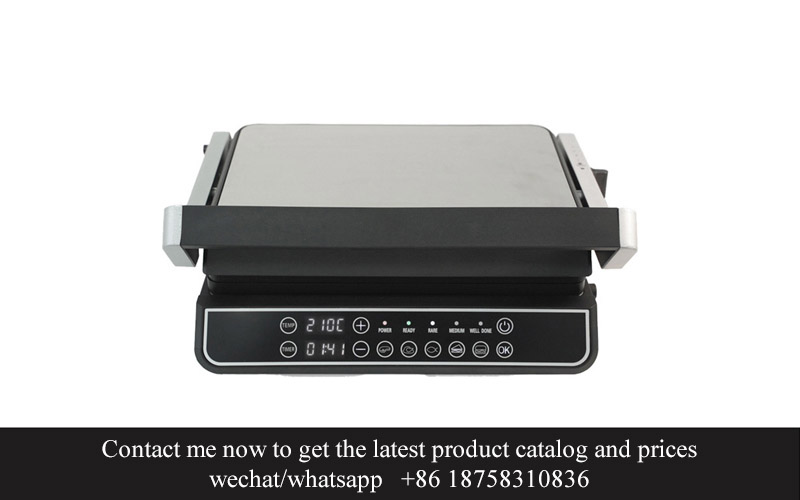
Focus on High-Quality and Trendy Products: To thrive in the kitchen appliances dropshipping market on Lazada and Shopee, it’s crucial to source high-quality products that align with current trends. Keep an eye on what’s popular in the market and choose suppliers who offer products that stand out.
Optimize Product Listings: Your product listings are your storefront. Ensure they are visually appealing, with clear, high-resolution images and detailed descriptions. Highlight key features and benefits to capture the attention of potential buyers.
Price Strategically: While you want to offer competitive prices to attract customers, don’t forget to make a profit. Find a balance between affordability and profitability. Consider using dynamic pricing tools that can adjust prices based on demand and competition.
Utilize Customer Reviews and Ratings: Positive reviews and high ratings can significantly influence purchasing decisions. Encourage satisfied customers to leave reviews and address any negative feedback promptly to maintain a good reputation.
Leverage Social Media: Social media platforms like Instagram and Facebook are great for showcasing your products and engaging with potential customers. Create visually compelling content and share your products with relevant hashtags to increase visibility.
Offer Multiple Payment Options: Make it easy for customers to buy by offering multiple payment methods. This includes credit/debit cards, PayPal, and local payment options like Alipay or WeChat Pay, depending on your target market.
Focus on Customer Service: Providing exceptional customer service can set you apart from competitors. Respond to inquiries and messages promptly, offer clear return policies, and be ready to resolve any issues that arise.
Use Data Analytics: Take advantage of Lazada and Shopee’s analytics tools to track sales, customer behavior, and inventory levels. Use this data to make informed decisions about your product offerings and marketing strategies.
Engage in Cross-Selling: Suggest complementary products to your customers to increase their basket size. For example, if someone buys a blender, they might also need a high-quality food processor or a set of mixing bowls.
Stay Informed About Market Trends: The kitchen appliances market is always evolving. Keep up with the latest trends, such as smart kitchen technology, eco-friendly appliances, and health-conscious designs. Adapt your product range to include these innovations.
Build Strong Relationships with Suppliers: A good relationship with your suppliers can lead to better deals, faster shipping times, and improved product quality. Communicate regularly and be transparent about your business needs.
Create Engaging Content: Share tips and tricks for using kitchen appliances, recipes, and DIY home projects. This content can help establish your brand as an authority in the kitchen appliances niche.
Run Promotions and Discounts: Special offers can drive sales. Plan promotions strategically, such as during holidays or when launching new products, to boost your revenue.
Optimize for Mobile Users: A significant portion of online shopping is done on mobile devices. Ensure your website and product listings are mobile-friendly to cater to this audience.
Be Adaptable: The e-commerce landscape is constantly changing. Be ready to pivot your strategy if certain products or marketing tactics aren’t working as expected. Stay flexible and open to new ideas.
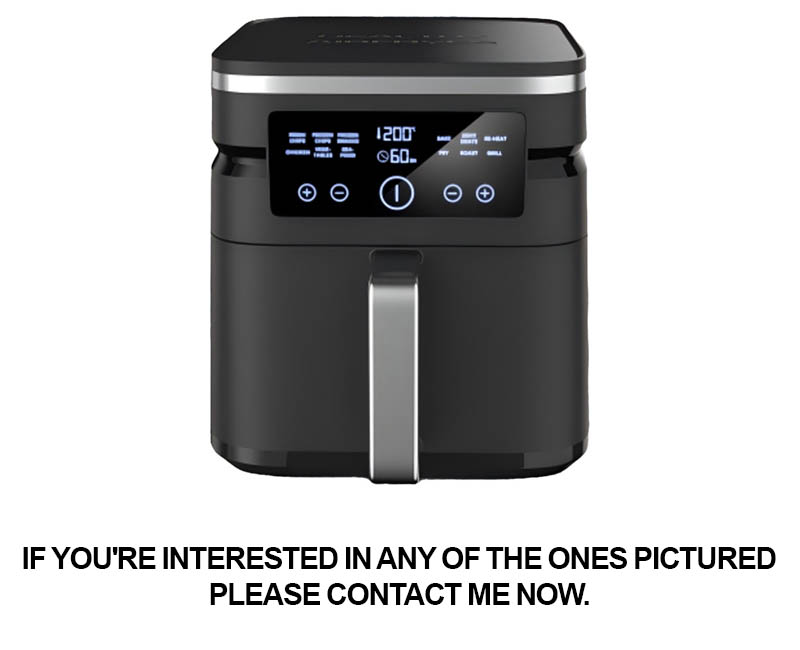
The kitchen appliances industry has been witnessing remarkable transformations, driven by evolving consumer needs and technological advancements. As we look towards the future, it’s clear that e-commerce platforms like Lazada and Shopee are at the forefront of this shift. Here’s a glimpse into the future of kitchen appliances e-commerce.
Smart Integration is KeyKitchen appliances are no longer just tools for cooking; they are becoming integral parts of a connected home. Smart integration is the next big trend, with appliances that can be controlled via smartphones, offering convenience and efficiency. Imagine a fridge that can suggest recipes based on the ingredients you have or a stove that can adjust its temperature according to your cooking preferences.
Eco-Friendly Designs Gain TractionWith growing environmental concerns, there’s a shift towards eco-friendly kitchen appliances. Energy-efficient models that consume less power and sustainable materials are becoming more popular. Consumers are not only looking for appliances that save them money on energy bills but also those that are kind to the planet.
Personalization and CustomizationTailoring kitchen appliances to individual needs is becoming more accessible. From adjustable oven temperatures to customizable settings on dishwashers, manufacturers are focusing on personalization. This trend is likely to continue, as customers seek appliances that align with their unique cooking habits and preferences.
Sustainability and Social ResponsibilityThe future of kitchen appliances will likely see a stronger emphasis on sustainability and social responsibility. Brands that prioritize ethical sourcing, recycling programs, and transparent supply chains are likely to gain a competitive edge. Consumers are increasingly aware of the impact their purchases have on the environment and society.
Mobile-First Shopping ExperienceAs smartphones become the primary device for online shopping, e-commerce platforms like Lazada and Shopee are adapting their interfaces for mobile users. A seamless, mobile-first shopping experience will be crucial for success in the kitchen appliances market. This includes responsive designs, easy navigation, and quick checkout processes.
Augmented Reality (AR) and Virtual Reality (VR)Augmented Reality and Virtual Reality technologies are set to revolutionize the way consumers interact with kitchen appliances online. With AR, customers can visualize how a refrigerator or a kitchen island would look in their own space. VR could even allow potential buyers to simulate cooking with a new oven or stove before making a purchase.
Subscription Models for AppliancesThe subscription model, already popular in the tech industry, is slowly making its way into kitchen appliances. Instead of buying a product outright, consumers can pay a monthly fee to use the latest appliances, which are then replaced or upgraded periodically. This model offers flexibility and the latest technology without the upfront cost.
Globalization of TrendsTrends in kitchen appliances are becoming more global, with innovations from one region quickly spreading to others. As e-commerce platforms like Lazada and Shopee continue to expand their reach, they play a crucial role in disseminating these trends across different markets.
Data-Driven Decision MakingData analytics will be a cornerstone of the future kitchen appliances market. By analyzing customer data, manufacturers and retailers can tailor products, marketing strategies, and customer service to meet specific needs. This data-driven approach ensures that the right appliances are in the right places at the right time.
Customer Reviews and Social ProofIn the future, customer reviews and social proof will be even more influential. As consumers seek reassurance before purchasing, positive reviews and influencer endorsements will become key factors in decision-making. E-commerce platforms will need to facilitate this by offering robust review systems and influencer marketing tools.
The rise of kitchen appliances e-commerce is a testament to the changing landscape of consumer behavior and technology. As we move forward, the future will be defined by smart, sustainable, and personalized appliances, made accessible through innovative e-commerce platforms like Lazada and Shopee.